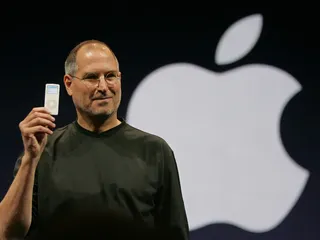
Grow Through the Rough Patch: Marketing Amid a Recession
Economic downturns and recessions are inevitable cycles in business, but daunting as they may be, they also present hidden opportunities for strategic brands to rise above their competitors. As marketers who've successfully weathered several storms alongside our clients, we've discovered invaluable insights on not just surviving but thriving during these challenging periods.
Keeping Marketing Momentum
Let’s dive into how you can maintain—and even accelerate—growth during turbulent economic times. Here are our experts’ top four tips on becoming recession-proof with strategic marketing.
1. Embrace Strategic Agility
In uncertain times, agility is more critical than ever. Brands that remain rigid, sticking firmly to pre-recession plans, often find themselves lagging behind. Innovative companies like Netflix and Amazon notably flourished in past recessions by quickly adapting their strategies. Netflix shifted from DVD rentals to streaming during the Great Recession of 2008 in response to consumer desires for affordable entertainment at home. Similarly, Amazon scaled up aggressively, capitalizing on growing demand for convenience and value.
Successful marketing during recessions involves being sensitive to consumer needs and swiftly pivoting messaging to highlight affordability, value and trust. Brands that align their core offerings with consumer sentiment tend to weather recessions best.
2. Double Down on Your Core Audience
When economic uncertainty hits, your instinct may tell you to broaden who you target. However, expanding too much can dilute your message and waste resources. Instead, strengthen connections with your core audience. Starbucks, during the 2008 recession, scaled down rapid expansion and instead reinvested in enhancing customer experience and loyalty. Their decision to concentrate efforts on existing customers resulted in strengthened brand affinity and accelerated recovery post-recession. Remember that consumers are weathering the economic as well, so if the first time a person hears about or from your brand is when times are tough, it’s not a good look.
Your loyal customers are your greatest asset. Invest in customer retention strategies, loyalty programs and personalized marketing. The brands that remain visible and relevant to their dedicated consumer base during a downturn often recover fastest once the economy stabilizes.

3. Innovate With Purpose
Recessions can feel like a risky time to innovate, but strategic innovation is precisely what distinguishes thriving brands from struggling ones. Apple’s 2001 launch of the iPod came amid a recession and showcased how calculated risk-taking can pay off enormously. The innovation was targeted, practical and consumer-driven, addressing clear pain points in music consumption.
Use economic slowdowns as an opportunity to assess consumer needs and innovate accordingly. Products or services that provide genuine solutions to real-world problems are particularly valuable when budgets tighten. Purposeful innovation positions your brand as essential rather than discretionary.
Innovation doesn’t necessarily mean developing a new product or reimagining a current service; it can mean innovating how you operate internally. With the contemporary AI boon, many companies are using this time to automate marketing operations to streamline their sales funnel and make their connections with consumers more seamless.
4. Invest Wisely in Marketing
Reducing marketing spend is a common knee-jerk reaction during recessions, but history repeatedly shows this can be detrimental long-term. According to studies from McGraw-Hill Research, companies that increased or even maintained marketing budgets during past recessions averaged significantly higher sales growth both during and after the downturn.
Effective recession marketing focuses heavily on measurable, performance-driven strategies like targeted digital campaigns, SEO and strategic content marketing. Maintaining brand visibility through calculated and intelligent spending ensures that when recovery begins, your brand is already positioned at the forefront of consumer minds. Learn where to allocate marketing spend in a recession and plan accordingly.
Who We've Elevated
We know a thing or two about creating visibility during economic downturns. As you’ve probably guessed, this isn’t our first rodeo. Just take a look at a few of the EMB clients we’ve elevated during some of the most challenging times.
In 2017, Kellytoy was ready to launch its first consumer-facing brand, but the 30-year-old company had white labeled for other products, meaning that its brand had little to no equity in the market. Facing an uphill battle, our team worked with Kellytoy to develop and market Squishmallows. In our years together, EMB defined a strategy that took their web and social visibility from 0 to hero. Three years later, in 2020, Squishmallows already had a successful exit through Jazwares’ acquisition of the brand. By 2022, it was sold to Berkshire Hathaway for 12 billion dollars. Talk about recession-proof...
Another notable client is The Vineyards of Porter Ranch, a premier shopping venue developed and launched by JLL in early 2019. Our marketing goal was to increase foot traffic; however, COVID-19 shut down the world. Instead of hiding, we pivoted and created a digital-first content strategy that built community relationships beyond in-person connections. Not only did we create massive visibility for the brand, but we did so with a meager budget and bold strategy. Later, JLL asked us to brand their sister property, Porter Ranch Town Center.
Final Thoughts: The Bang for Your Buck
Navigating a recession successfully is less about sheer survival and more about positioning strategically for recovery. By staying agile, nurturing your core audience, innovating purposefully and investing intelligently, your business can emerge from economic uncertainty not just intact, but stronger.
Economic downturns can clear paths to new opportunities. They compel brands to reconnect with their core commitments and focus on consumer-centered strategies. Ultimately, the businesses that view recessions as catalysts for strategic growth rather than mere hurdles are those that triumph.
By now, you recognize the value of continuing marketing efforts during economic uncertainty, but you have to do it right. And to do it right, you need a great guide. At EMB, we’ve been doing this for over 16 years, across 400+ clients.
With our proven process, which starts with a comprehensive Discovery Phase that identifies core marketing goals, establishes audience personas and creates a marketing roadmap, we’ll elevate you to where you want to be. And you can take that to the bank!
Ateeq Rehman,
Account Manager
Recession-proofing your marketing will take more than reading a blog post—but it wouldn't hurt to read one more. Check out our other articles on building your brand and maintaining your marketing amid hard economic times:




